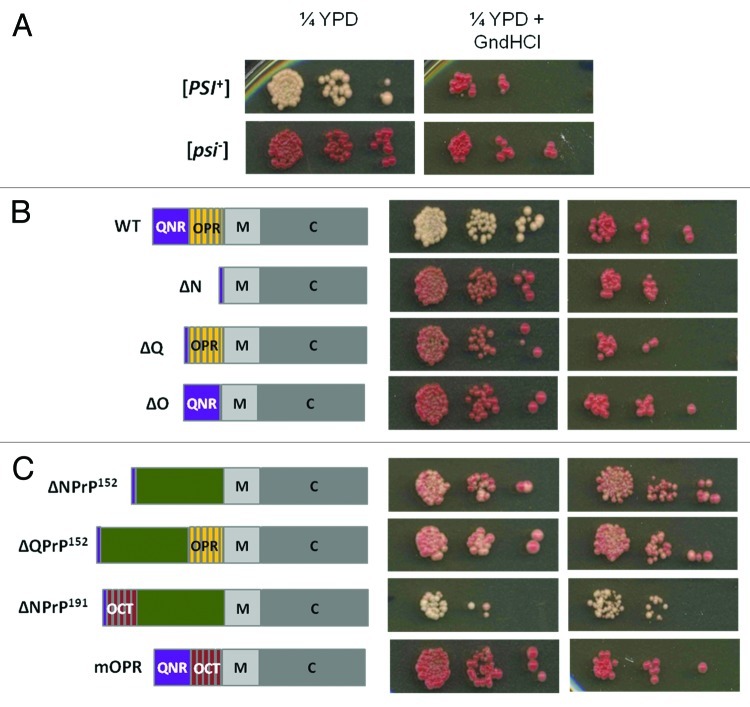Figure 2. The expression of various Sup35/Sup35-PrP proteins in Saccharomyces cerevisiae. (A) The [PSI+] ade1–14 strain LJ14 gives rise to white colonies on rich growth medium (1/4 YEPD) indicative of nonsense suppression. Growing these cells on the same medium but supplemented with 4 mM guanidine hydrochloride (GdnHCl) results in the loss of the [PSI+] giving a non-suppressed red phenotype. Serial 1::5 dilutions of a cell suspension are shown. (B) The deletion of either the full N region (∆N, lacking amino-acid residues 5–112), the QN-rich region (∆Q, lacking amino-acid residues 5–40) or the OPR region (∆O, lacking amino-acid residues 41–97) generates a form of Sup35 that is functional, but no longer able to switch to a stable [PSI+] prion form. In each construct the N-terminal residues of Sup35 are retained (see text for details). (C) The phenotypic consequences of expressing various Sup35-mouse PrP fusion proteins in the LJ14 [PSI+] strain. See text for details of constructs shown. PrP sequences are shown in green. OCT, the mouse PrP octarepeat region; QNR, the Sup35 QN-rich region; OPR, the Sup35 oligopeptide repeat region.

An official website of the United States government
Here's how you know
Official websites use .gov
A
.gov website belongs to an official
government organization in the United States.
Secure .gov websites use HTTPS
A lock (
) or https:// means you've safely
connected to the .gov website. Share sensitive
information only on official, secure websites.
